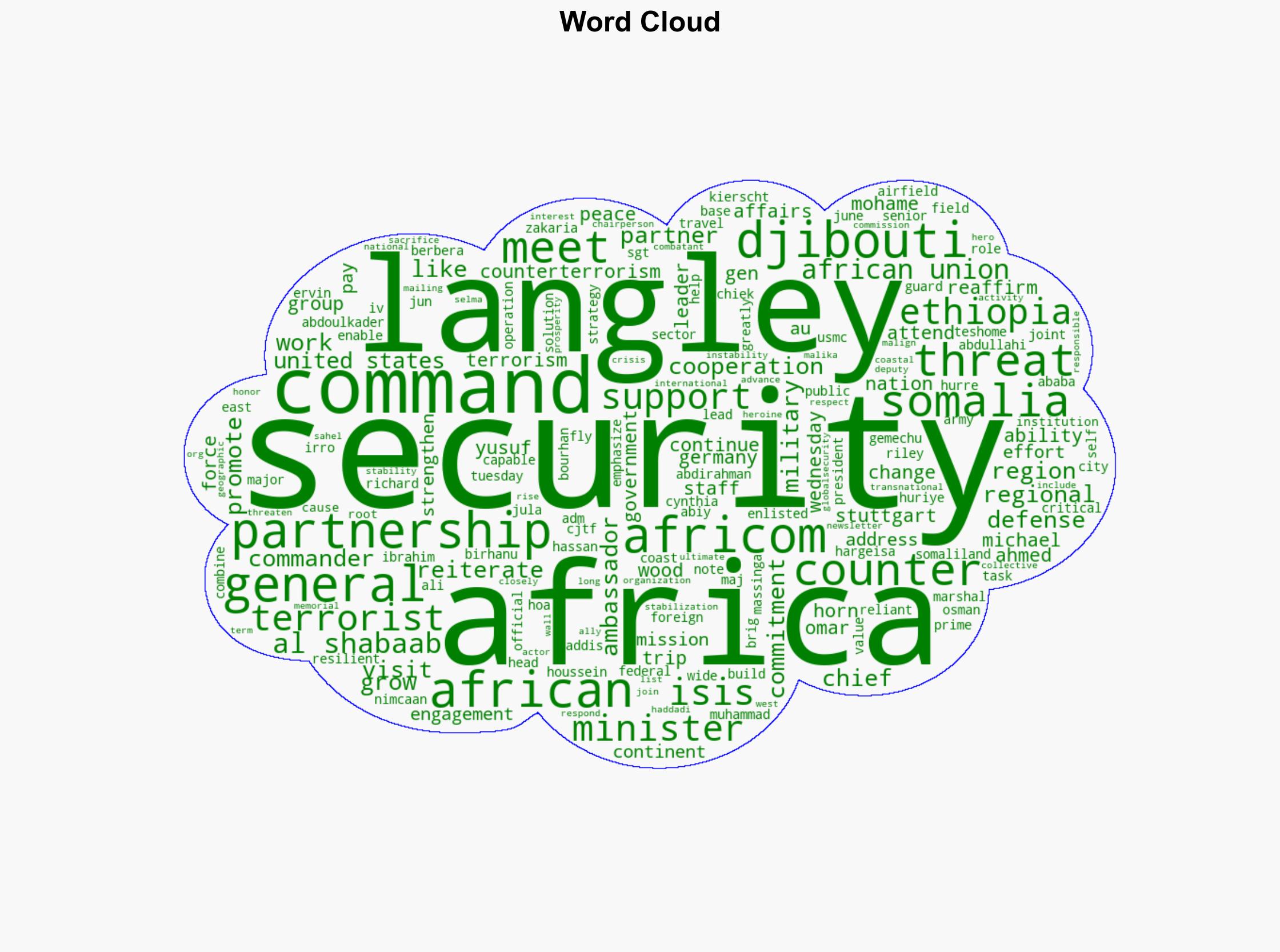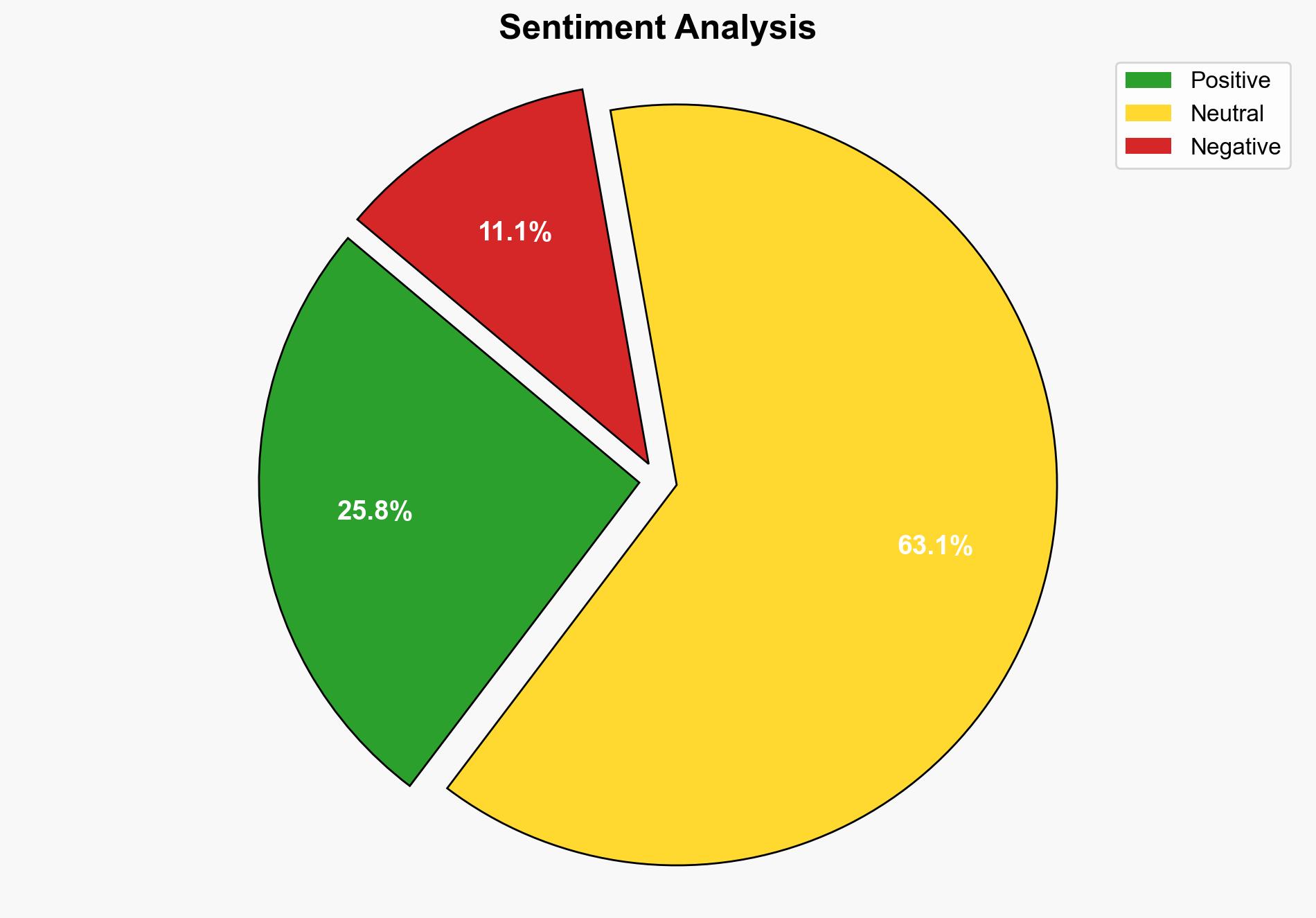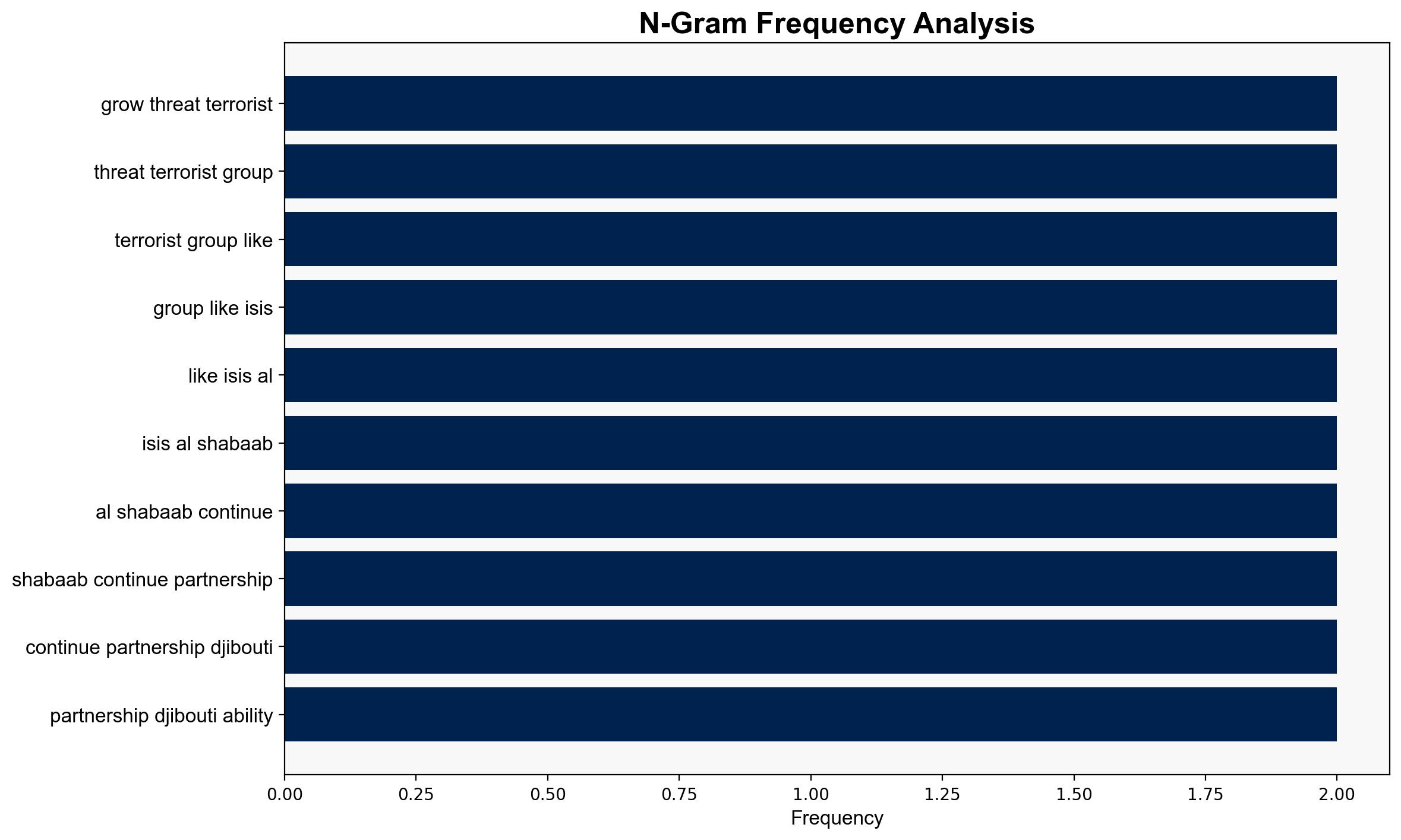Commander’s Visit to East Africa Reiterates Security Partnerships Cooperation – Globalsecurity.org
Published on: 2025-06-28
Intelligence Report: Commander’s Visit to East Africa Reiterates Security Partnerships Cooperation – Globalsecurity.org
1. BLUF (Bottom Line Up Front)
The recent visit by key military leaders to East Africa underscores a reinforced commitment to security partnerships amid escalating threats from terrorist groups such as ISIS and Al-Shabaab. This engagement aims to bolster regional counterterrorism capabilities and promote stability. Key recommendations include enhancing intelligence sharing and supporting local military training initiatives.
2. Detailed Analysis
The following structured analytic techniques have been applied to ensure methodological consistency:
ACH 2.0
Analysis suggests that the primary intention of the visit was to strengthen alliances and reaffirm commitments to counterterrorism efforts. The presence of high-ranking officials indicates a strategic focus on enhancing operational readiness and regional cooperation.
Indicators Development
Monitoring of digital platforms reveals increased propaganda and recruitment efforts by terrorist groups, necessitating proactive measures to disrupt potential threats.
Narrative Pattern Analysis
Ideological narratives are being adapted to exploit regional grievances, highlighting the need for counter-narratives and community engagement to prevent radicalization.
3. Implications and Strategic Risks
The strengthening of security partnerships in East Africa is crucial to countering the growing influence of terrorist organizations. However, the region remains vulnerable to cyber threats and political instability, which could undermine these efforts. The potential for cross-border terrorism and economic disruption poses significant risks to regional security.
4. Recommendations and Outlook
- Enhance intelligence-sharing frameworks to improve threat detection and response capabilities.
- Support local military training programs to build self-reliant security forces.
- Best case scenario: Strengthened regional alliances lead to a significant reduction in terrorist activities.
- Worst case scenario: Escalating threats overwhelm local capacities, leading to increased regional instability.
- Most likely scenario: Continued collaboration results in gradual improvements in regional security.
5. Key Individuals and Entities
Michael Langley, Michael Woods, Cynthia Kierscht, Abdoulkader Houssein Omar, Hassan Omar Mohame Bourhan, Zakaria Chiek Ibrahim, Richard Riley IV, Abdirahman Mohame Abdullahi Irro, Muhammad Yusuf Ali, Nimcaan Yusuf Osman, Ahmed Hurre Huriye, Ervin Massinga, Abiy Ahmed, Birhanu Jula, Teshome Gemechu, Selma Malika Haddadi.
6. Thematic Tags
national security threats, cybersecurity, counter-terrorism, regional focus




